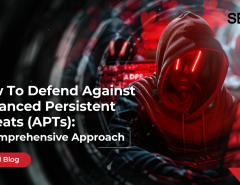Brute-force attacks can probably be regarded as the first word in the alphabet of cybersecurity. Among the oldest ways of trying to gain unauthorized access to an account, brute-force attacks have been around forever. But the fact that despite their day and age, they are still used is a testament to the fact that it still remains scarily effective.
But first, what are brute-force attacks? They are actually exactly the name conveys – when hackers use “brute force” to guess a username or password to gain access to an account. Hackers can keep trying on various combinations repeatedly all in the hope of managing to gain access to the account
Of course, that is not always easy. Most passwords are compulsorily made to be a combination of alphabets, numbers and special characters, basically to prevent against brute-force attacks. This kind of combination of alphabets, numbers and special characters add more complexity to passwords and mean there are endless number of combinations for a password, making it more difficult for hackers.
On the other hand, hackers have also evolved. Technically speaking, they can devote huge amounts of computing power, sometimes leeching it from a target’s computer, to crack a code. They can run huge amounts of attacks on a single system in batches. Or sometimes, they can just rely on human infallibility like the cases below, which prove why brute-force attacks can still be effective.
Dictionary attack
As per its name, passwords which are words that can be easily found in the dictionary such as “hobbies” or “superguy” are extremely easy for hackers to crack. Unfortunately, there are still many people who prefer using words like these for passwords. Ultimately, all it needs is for a hacker to sit with a dictionary and hack the password.
Phishing
Crafty hackers know that there’s an easier way to access someone’s account than brute force. That way is phishing – when users voluntarily give their account details to an external agency. Hackers disguise themselves as legitimate authorities who send emails to users asking for account details and these tricked users to cooperate.
Social Engineering
Social engineering preys on human infallibilities. Users are coerced or tricked into giving away their account details because of intricate plans by attackers to tuck at their emotions. Users may be tricked by mails from an authentic looking IT department or even from a CEO, claiming that they are in danger or they urgently need passwords and other important credentials.
Malware & Keyloggers
Keyloggers are malware software which can record a user’s keystrokes on the computer. These can be surreptitiously installed on an unsuspecting user’s system through malware. A visit to an infected website, inserting an infected pen drive or even downloading an infected attachment can install keyloggers on a system. These keyloggers record all keystrokes on a system and transmit the information back to the hacker.
Through these techniques, it’s quite clear why brute-force attacks still remain effective. It’s important for enterprises to use a proper cybersecurity solution which provides proper security against these types of attacks. Enterprises can consider Seqrite Endpoint Security (EPS) which apart from other features also provides Phishing Protection.
As an IT security partner for your business, Seqrite provides comprehensive security from advanced cyber threats. To know more




